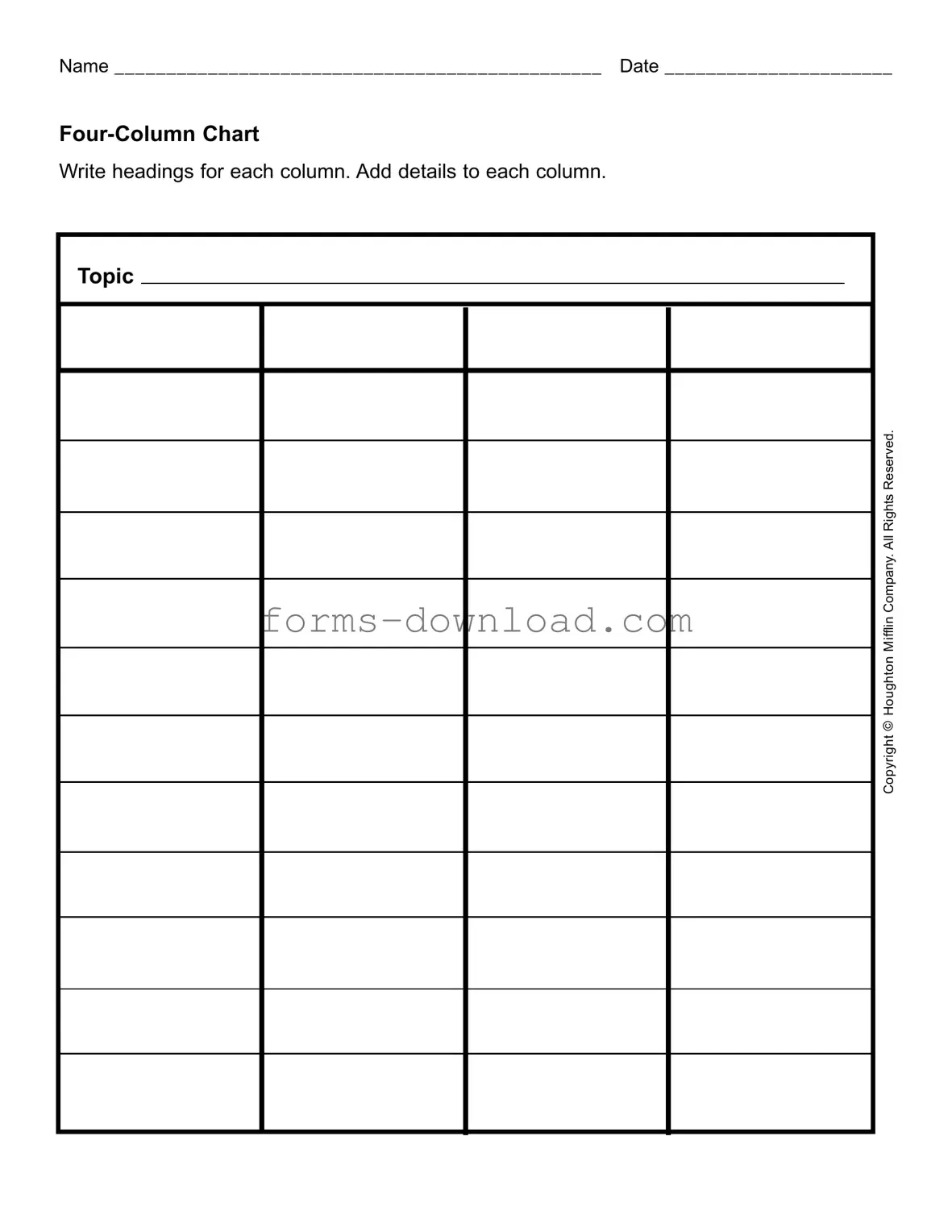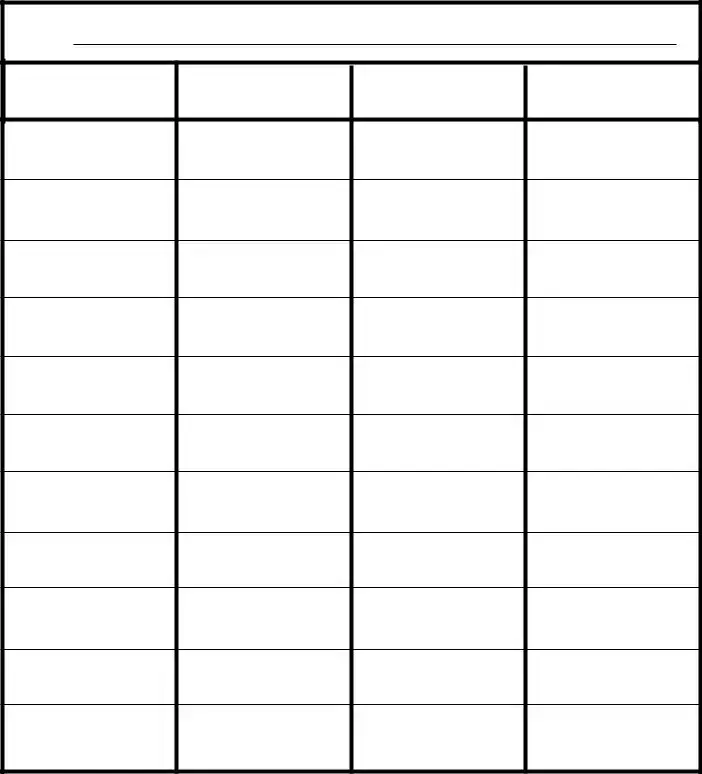The Four Column Chart form is a practical tool designed to help individuals organize information clearly and efficiently. It consists of four distinct columns, each intended for specific categories of data. Users begin by writing a title or heading for each column, which sets the framework for the information that will follow. This structure allows for easy comparison and analysis of various topics. For instance, in a business context, one might use the form to evaluate different aspects of a company, such as strengths, weaknesses, opportunities, and threats. The simplicity of the form encourages thoughtful engagement with the material, making it an ideal choice for brainstorming sessions or project planning. Whether used in educational settings or professional environments, the Four Column Chart form promotes clarity and organization in presenting complex information.

